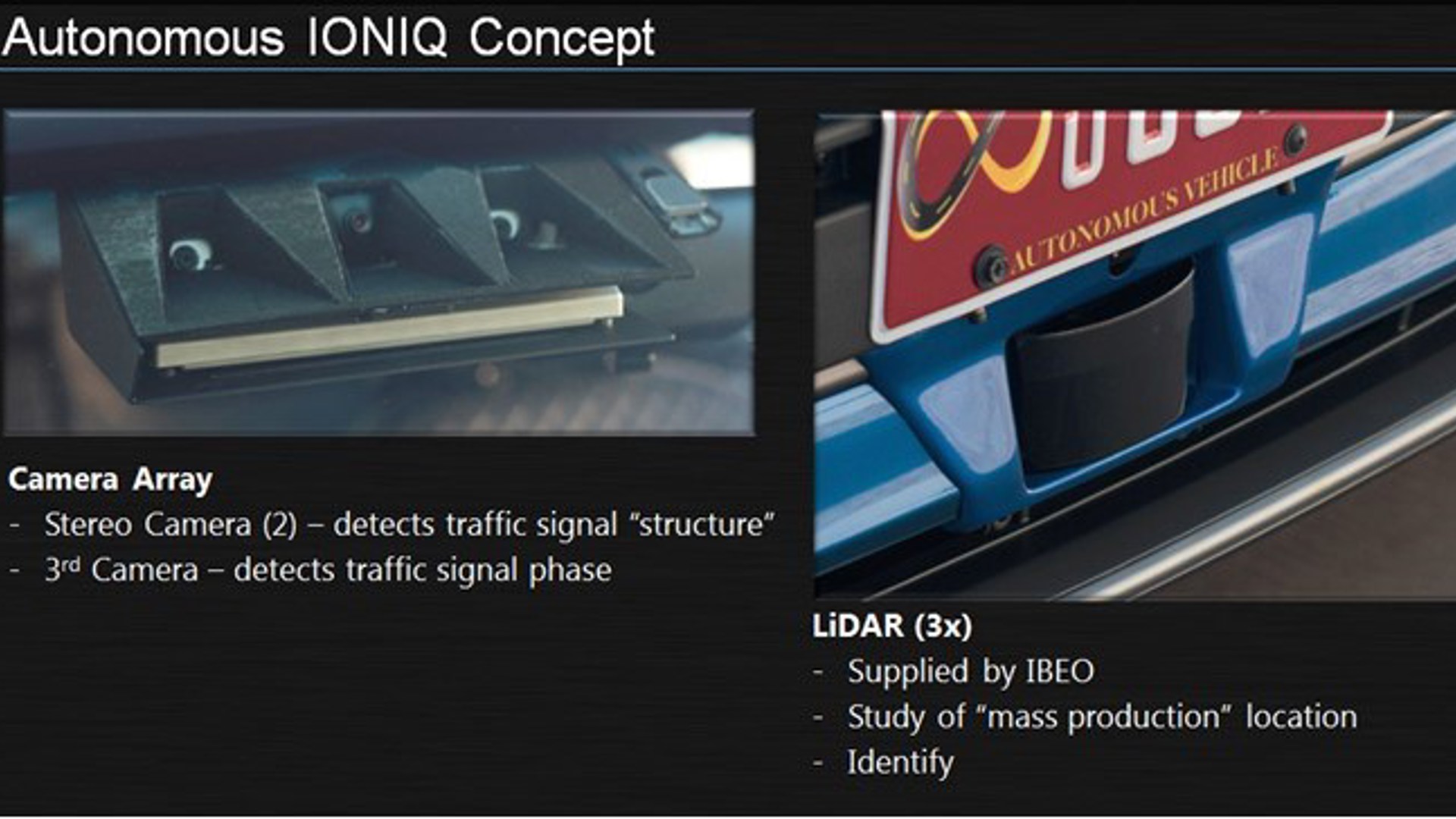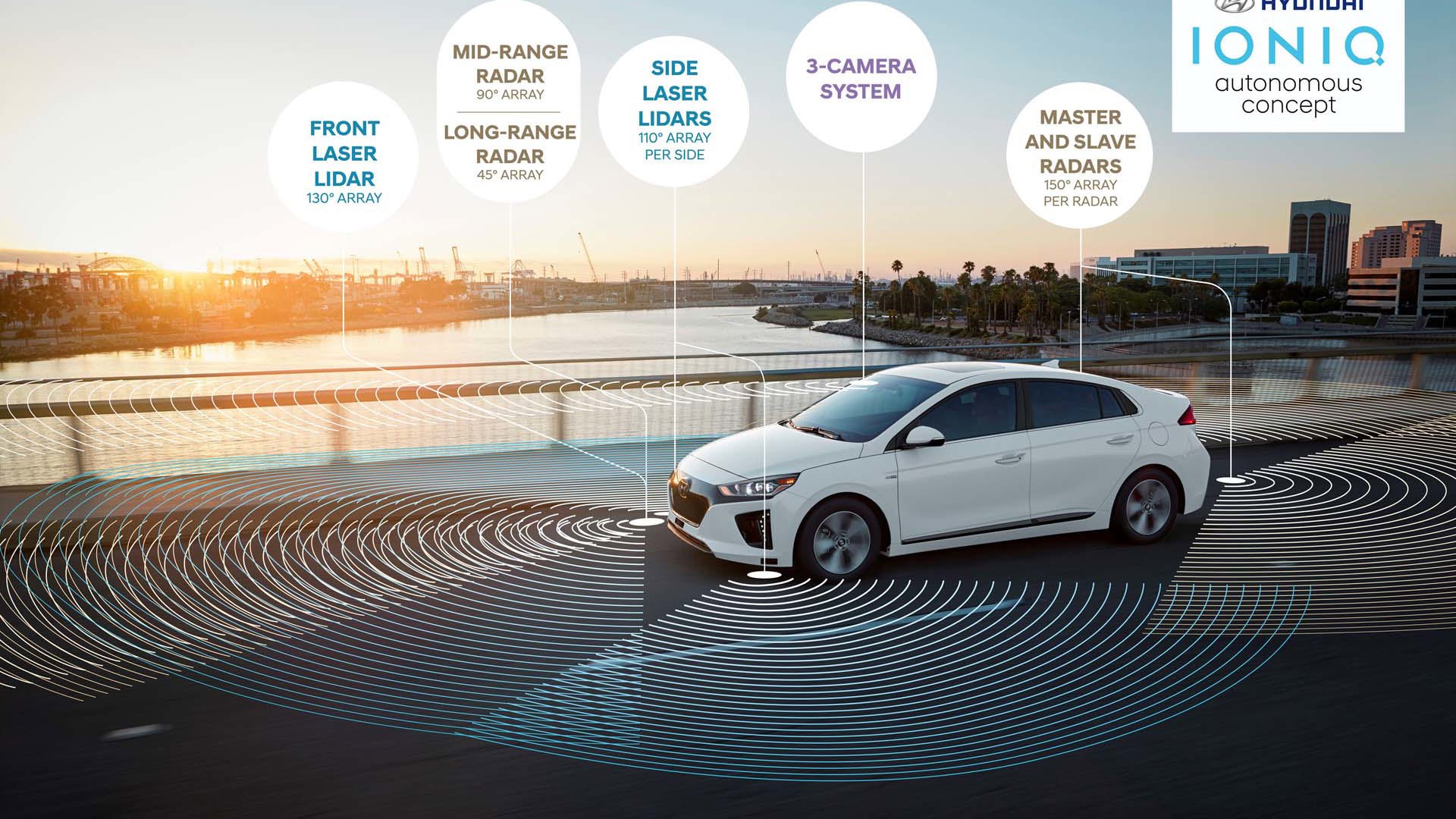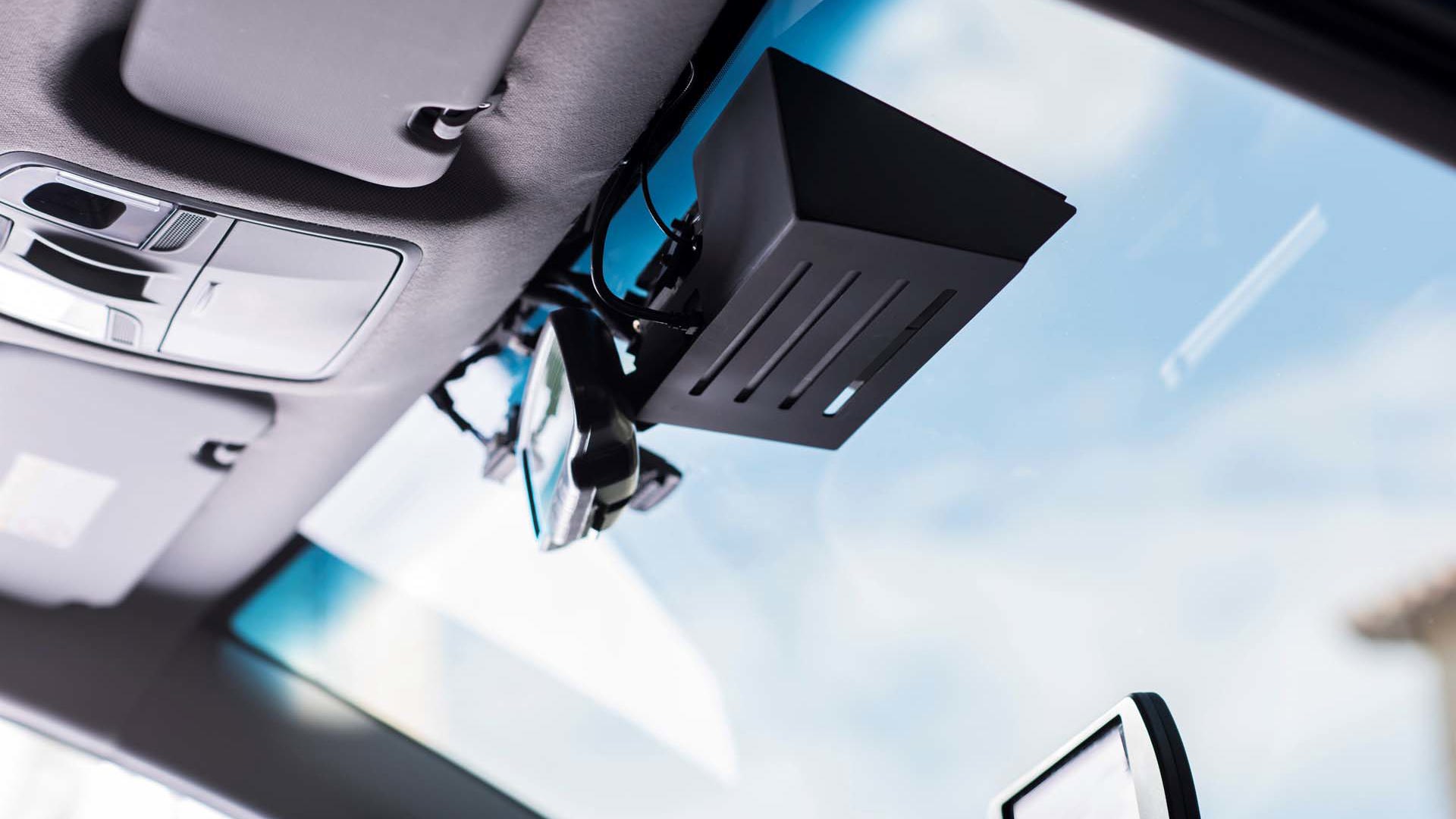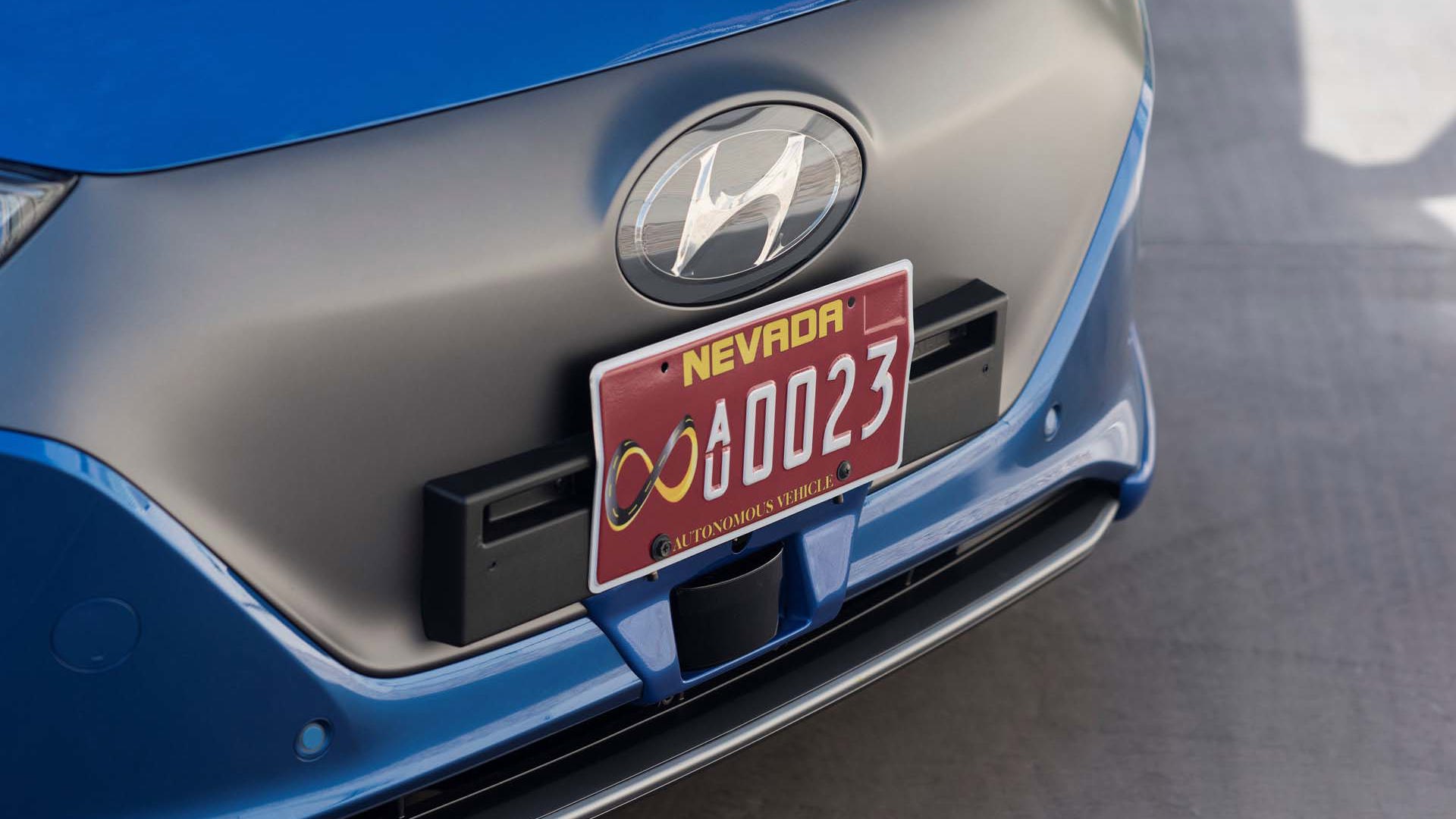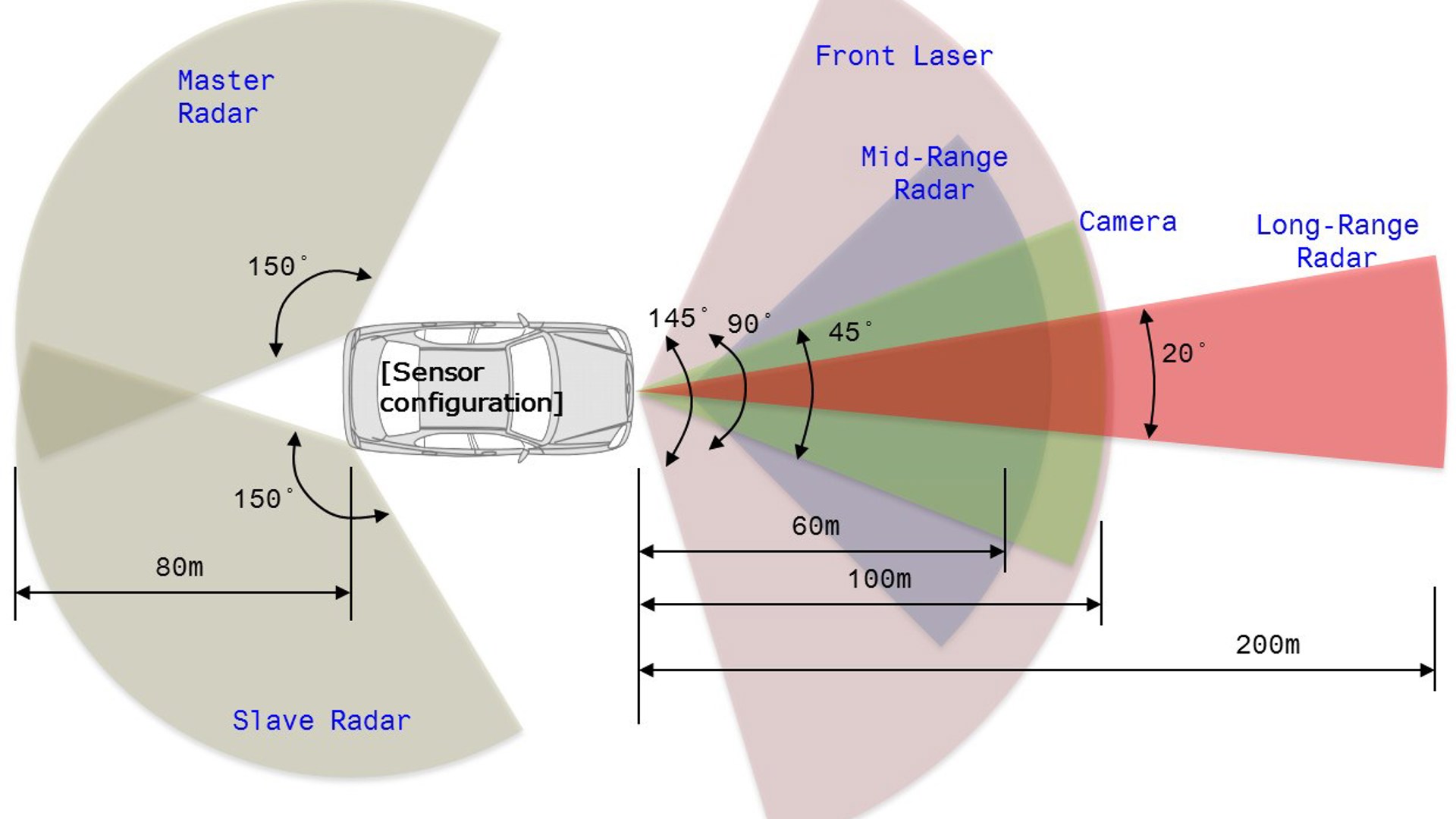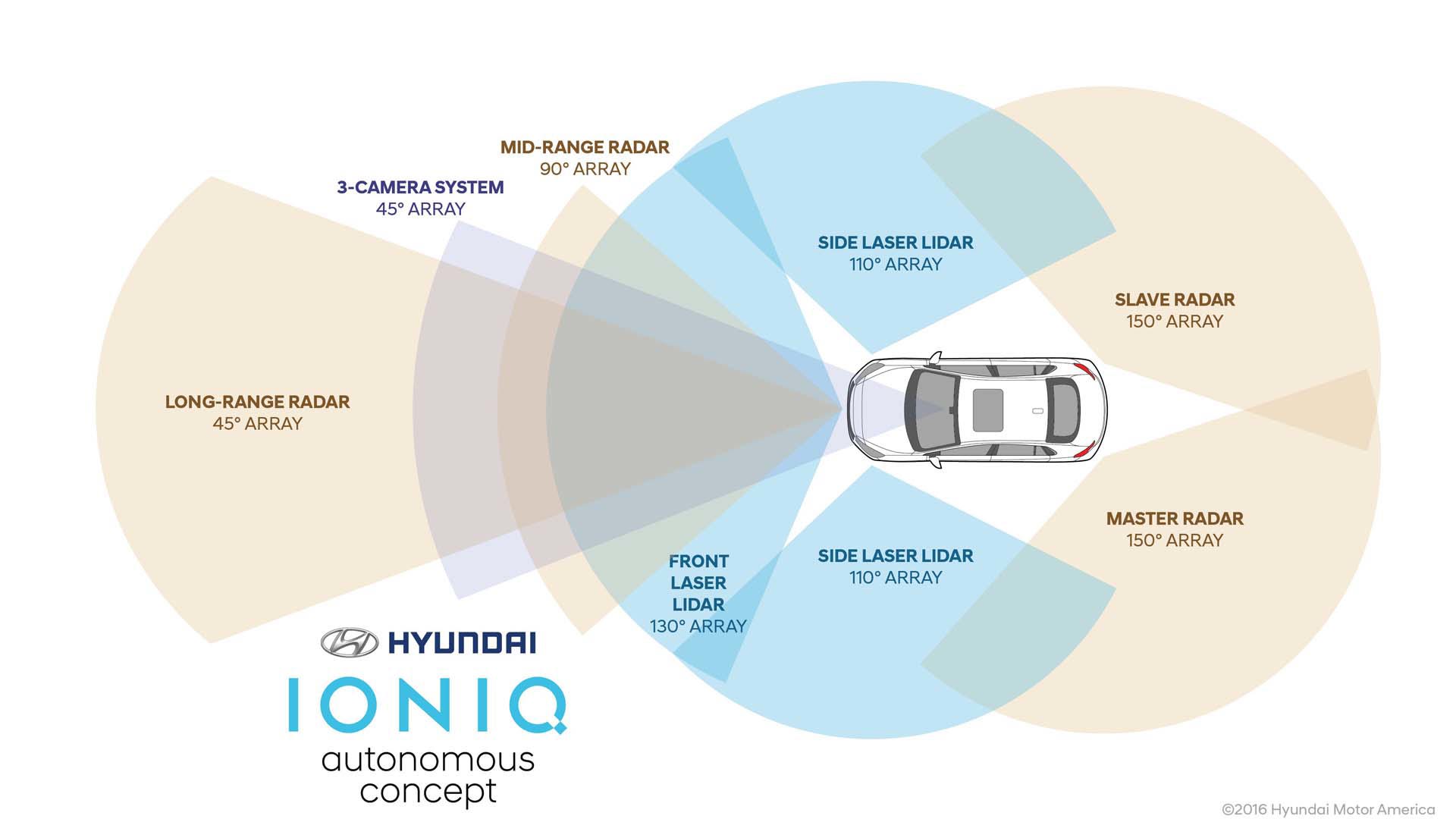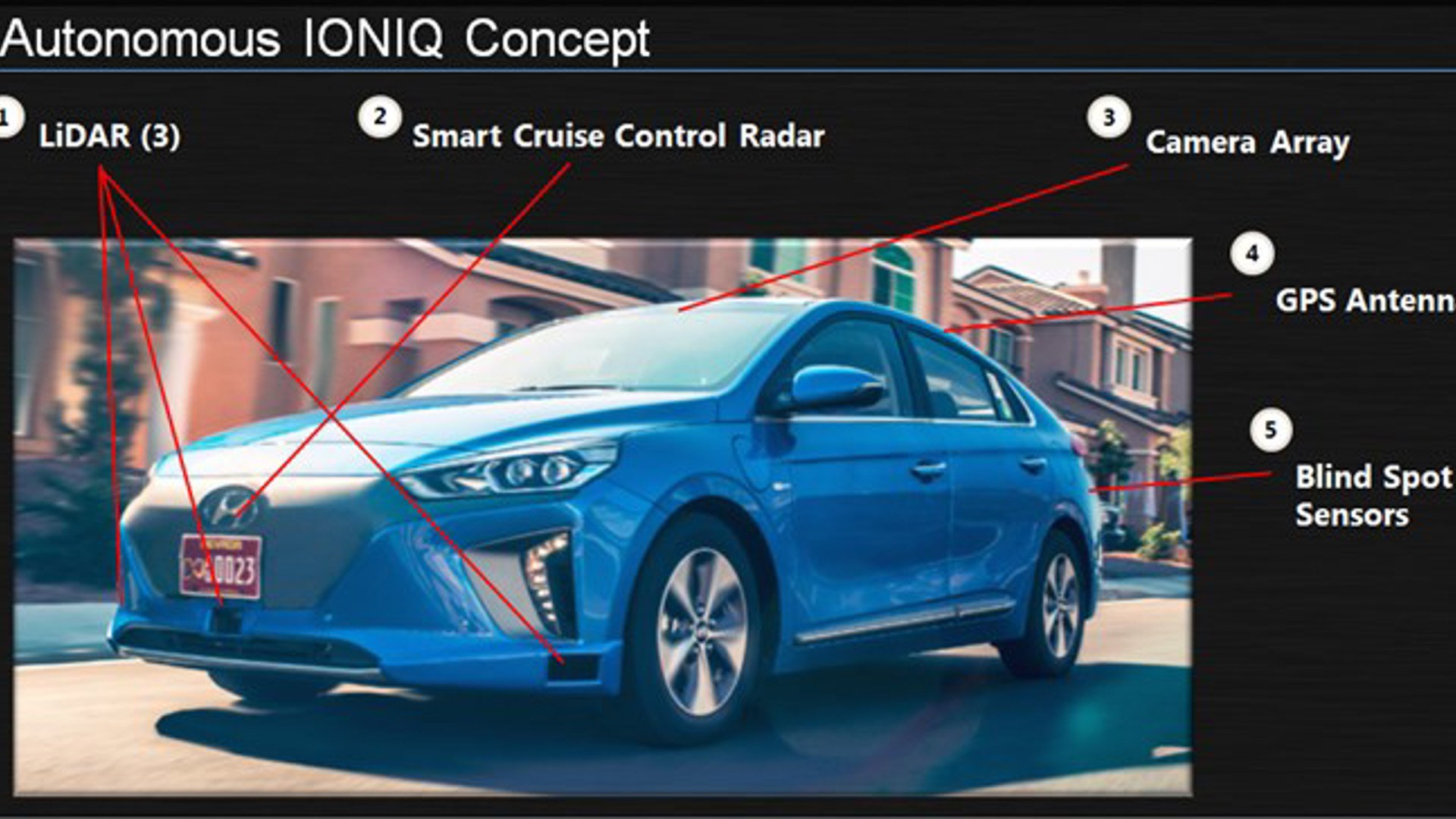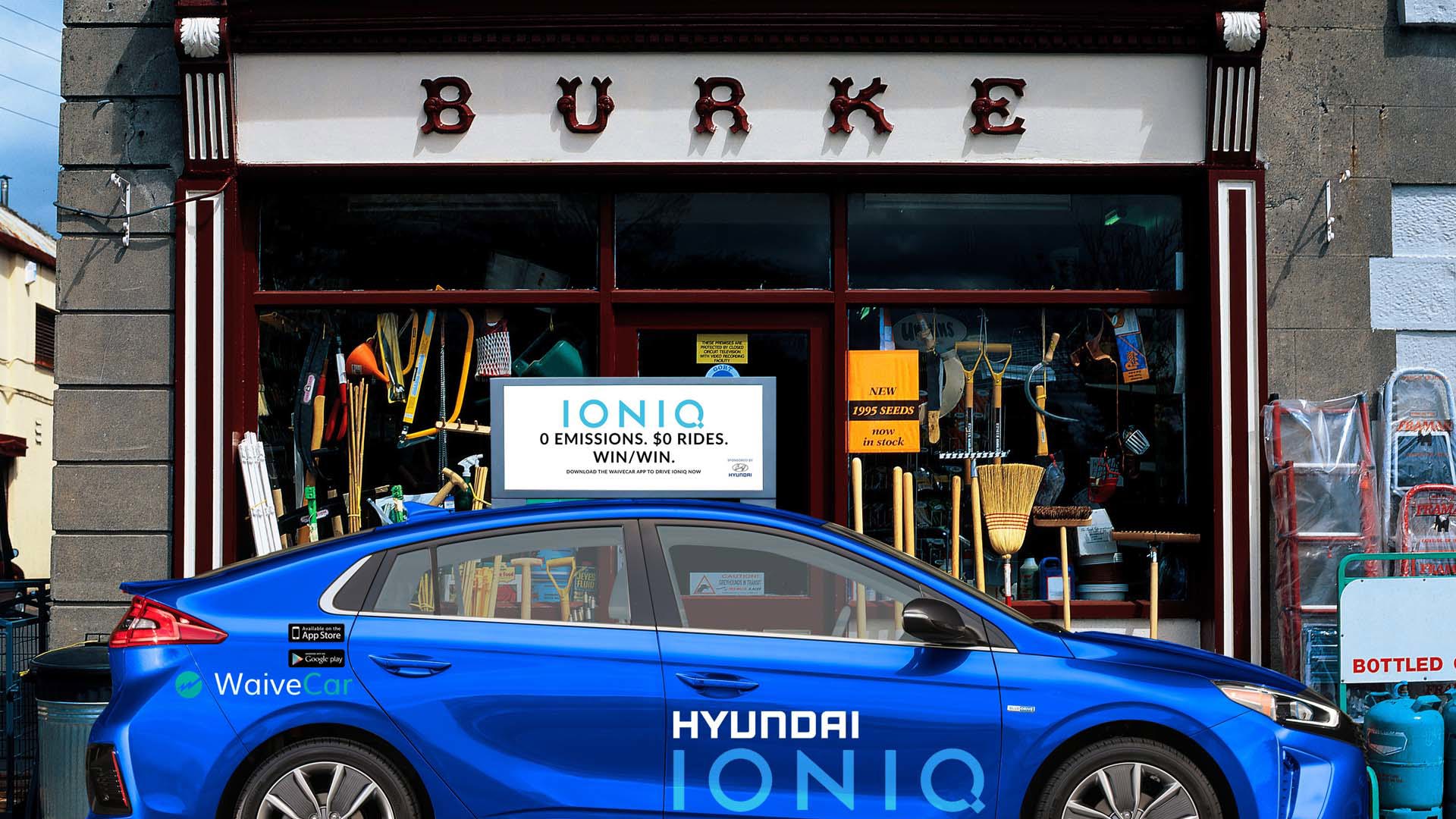LOS ANGELES, California – Aside from its invasive presence and the uncanny emptiness of its interior, one of the things that make people so uneasy about Google Cars is that alien appearance. Not only does it look like something from Pokémon GO, it’s wearing a coat rack made of death rays on its head.
This week, Hyundai introduced a self-driving variant of their new Ioniq Hybrid that’s remarkable only for its utter normalcy. In fact, you could almost call it “bland” – which is surprising in itself when you consider that it was a Red Dot Award winner for presenting an “evolutionary” design.
The Ioniq (derived from “ion” and “unique”) already comes in a variety of flavours: hybrid, plug-in hybrid, all-electric – and even a land-speed racer. The car that debuted at the LA Auto Show was a prototype, but with Hyundai currently testing a small fleet of autonomous vehicles at their Namyang R&D Centre in South Korea, it’s a strong indication that they’re seriously invested in self-driving vehicle production.
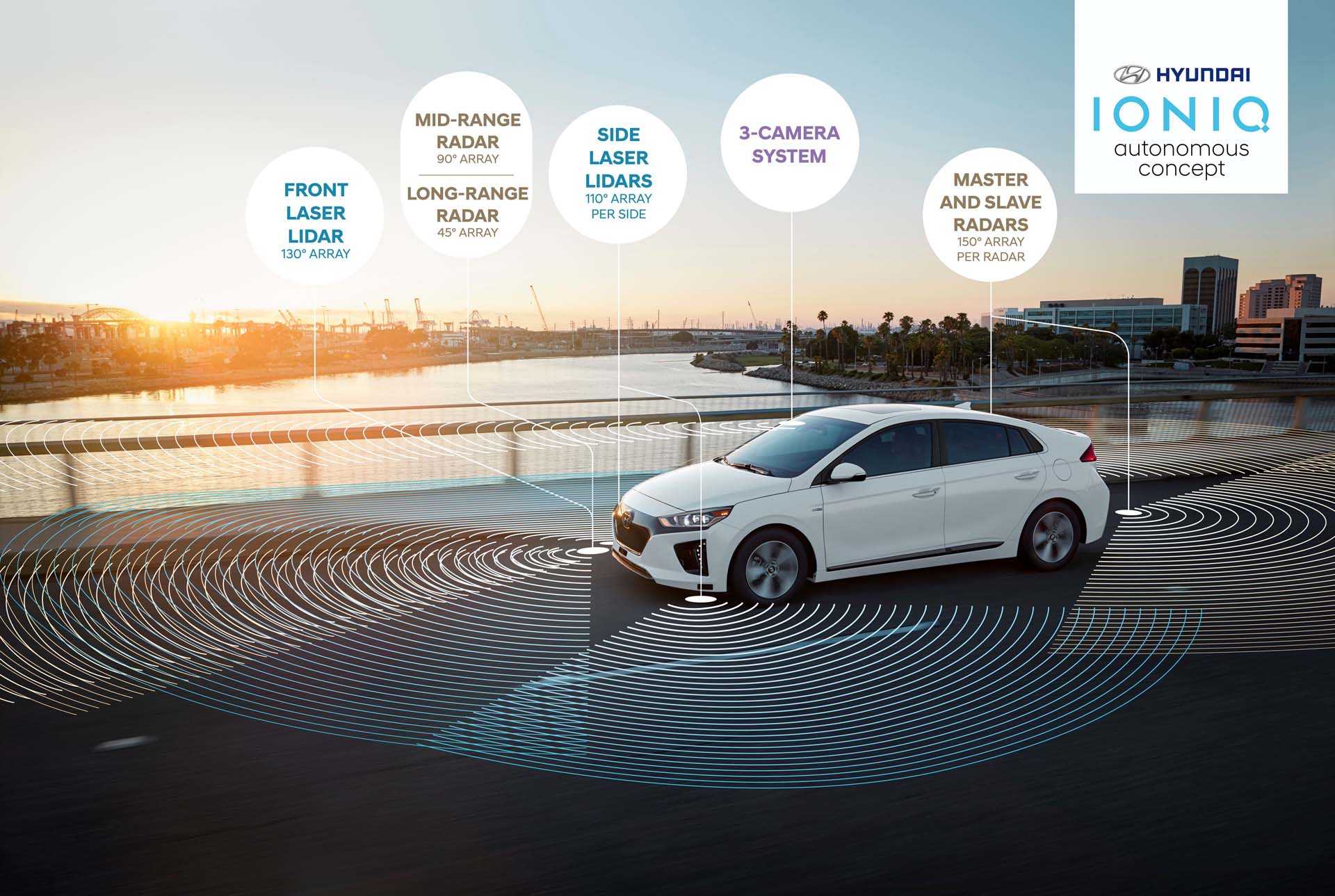
Semi-autonomous technology has become commonplace, trickling down from premium luxury cars to everyday drivers. It uses a combination of radar and cameras to build a 360 degree awareness of the vehicle’s surroundings, and can either react or alert the driver when necessary.
Self-driving cars, on the other hand, use a sophisticated system called lidar (a blend of “light” and “radar”) which works like radar but emits light instead of radio waves to form a picture of its environment. Generally, these are mounted on the roof of the car and contribute to their robotic image. The Ioniq’s bank of Lidar units is hidden within the bumper and the result is a vehicle that’s reassuringly “normal”.
In addition to the self-driving lidar units within the bumper, it also has three cameras and two radar systems to provide adaptive cruise control, pedestrian detection, lane-keeping assist and emergency braking. The car is also equipped with a very precise, high-definition GPS system to help it navigate city streets and highways accurately. By combining lidar with already available mainstream autonomous technology, Hyundai simplified the development process and also created a car that with more familiar driving characteristics.
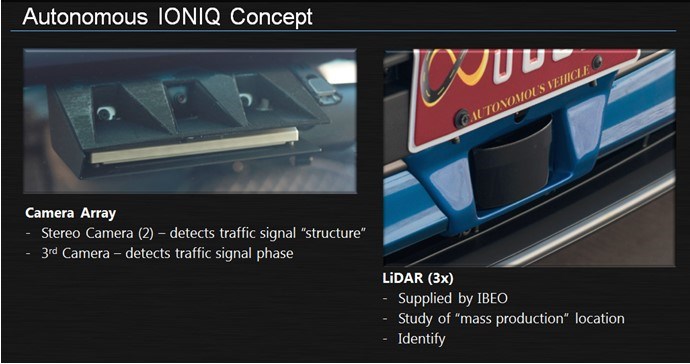
Hyundai also used the LA Auto Show platform to announce their new Ioniq marketing strategy. Realizing that younger people – and many urbanites – just aren’t that into car ownership, Hyundai has come up with a couple of interesting compromises.
“The newest tangible element of Hyundai’s mobility vision, is our electrified Ioniq lineup,” said Hyundai Motor American President Dave Zuchowsky. “It’s much larger and broader in scale than a fully dedicated platform for three distinct propulsion systems. It serves as a lynchpin for all future mobility initiatives.”
“Ioniq Unlimited” sounds like a cell phone plan, admits Zuchowsky. And indeed, that’s what inspired it. Like a data plan, you’re not investing a large sum into owning the product, you’re simply paying for its use. Subscribers can opt for a 24- or 36-month term with a single monthly payment, no money down, which includes scheduled maintenance and reimbursement for all charging costs.
The Unlimited plan will only be offered in California where the majority of electrified Ioniqs will be sold.
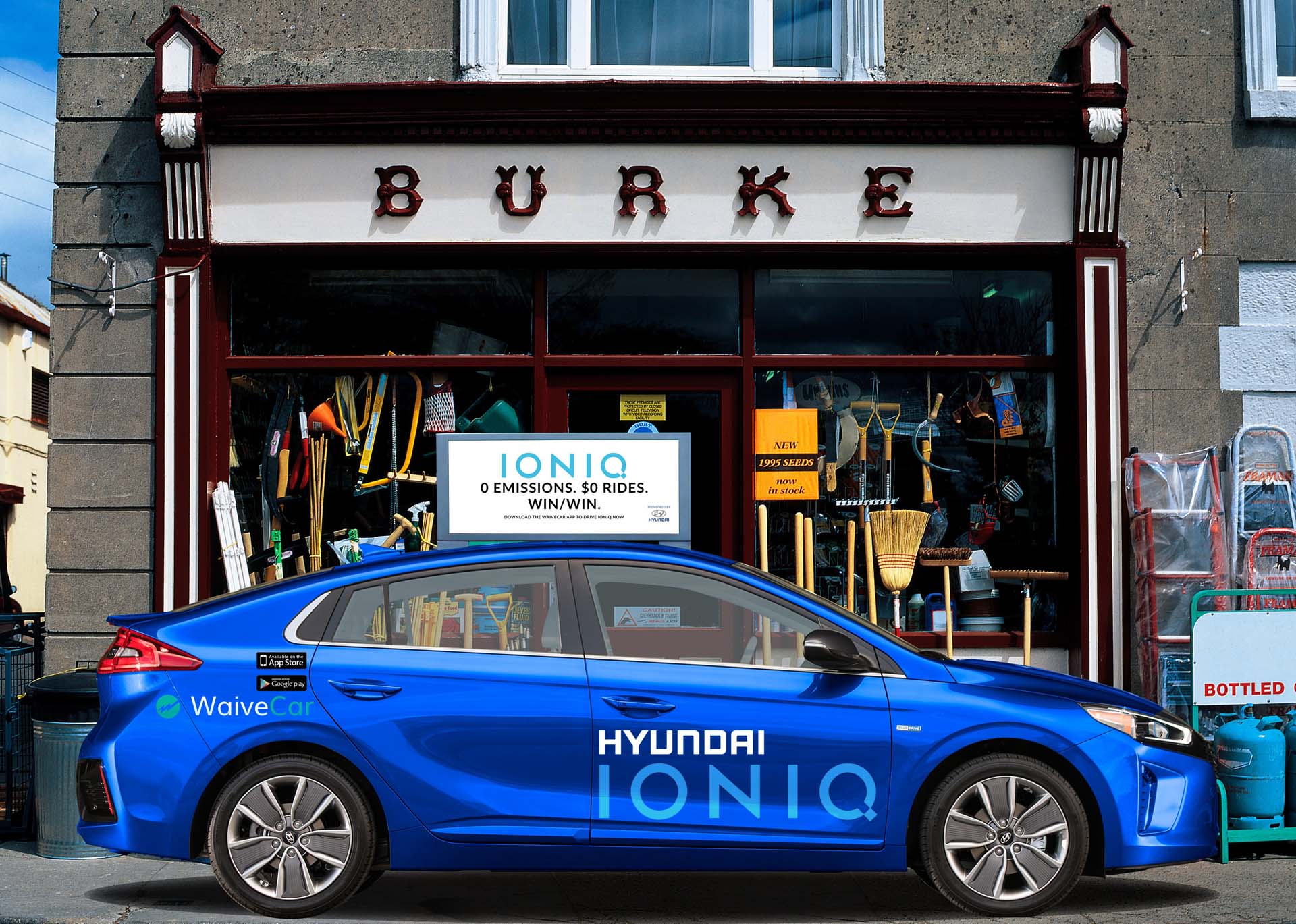
The second strategy sounds too good to be true. Hyundai will be offering up a car-share program using the Ioniq – for free.
Partnering with WaiveCar, the car-share company that derives all its revenue from advertising rather than user fees, Hyundai’s making its Ioniq available to users for local trips within a 20-mile radius, absolutely free. Of course, there is one catch – the vehicle will be wrapped head to toe in vinyl with a digital display on its roof. Subtle, it’s not.
Initially, the program will begin in Los Angeles, but there are plans to expand to a fleet of 250, within three major US cities. No mention – yet – whether we’ll get it here in Canada.

